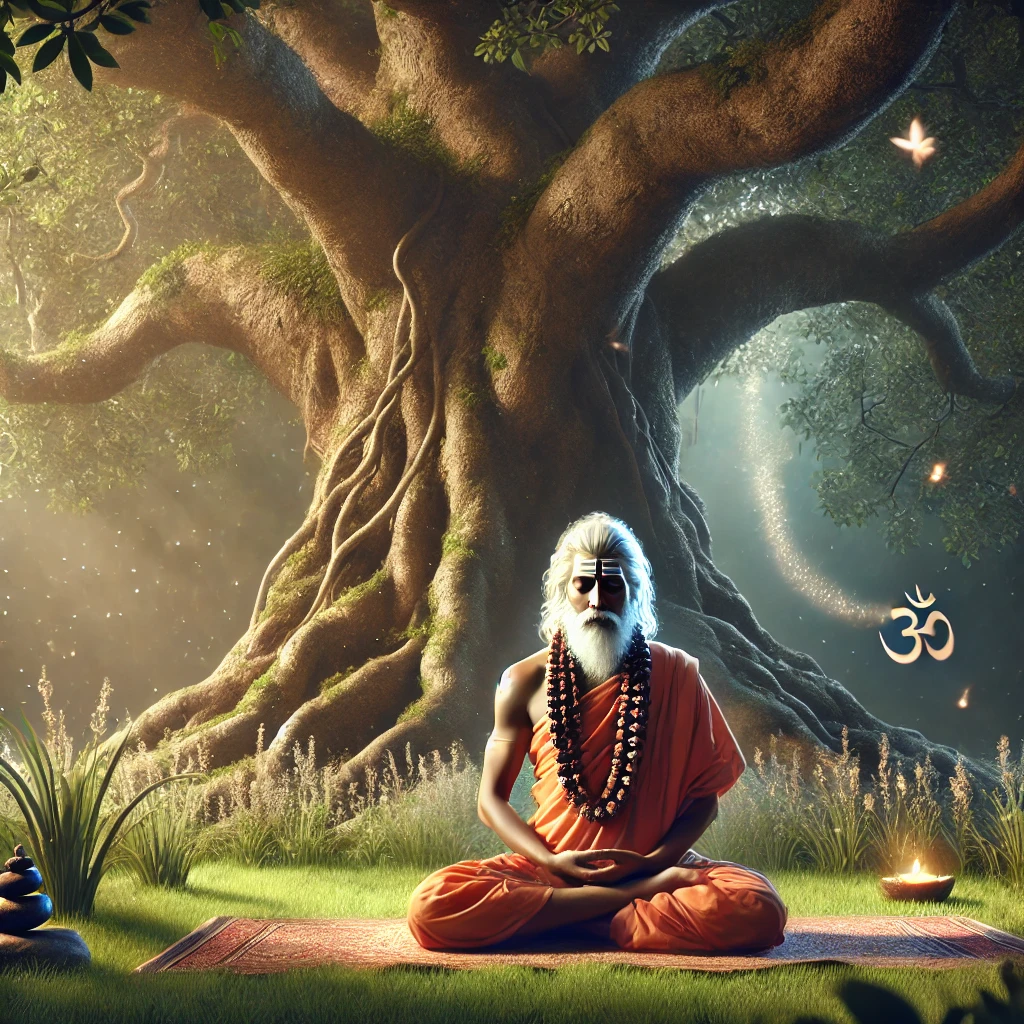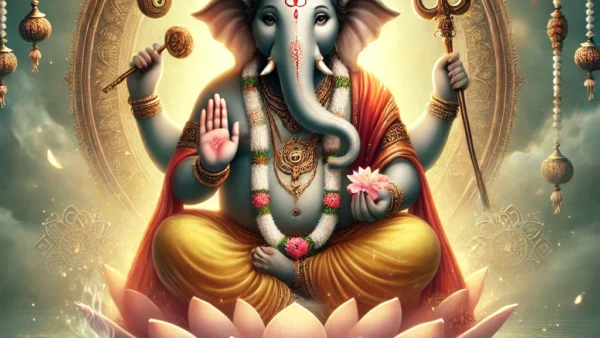In a world where material achievements often take precedence, the quest for inner peace and spiritual fulfillment has drawn many toward the path of becoming a spiritual guru. For centuries, spiritual leaders in traditions like Hinduism and Buddhism have been revered for their wisdom, compassion, and ability to guide others through life’s challenges. But what does it really mean to become a spiritual guru? How does one attain this level of spiritual enlightenment? In this blog, we’ll explore the journey to becoming a spiritual guru, weaving in Rudraksha beads, their significance, and how they may assist on this sacred path.
What is a Spiritual Guru?
A spiritual guru is not merely a teacher of religious texts or doctrines. A true guru embodies deep wisdom, spiritual insight, and a profound connection to the divine. This individual acts as a guide, leading others on the path to self-realization, inner peace, and enlightenment. In Hinduism, gurus are seen as vessels of divine knowledge, while in Buddhism, they are often regarded as bodhisattvas—beings who have achieved enlightenment but remain in the world to help others.
The word “guru” itself is significant. Derived from Sanskrit, “gu” means darkness and “ru” means light. A spiritual guru dispels the darkness of ignorance and leads followers toward the light of spiritual wisdom.
The Journey to Becoming a Spiritual Guru
1. Self-Realization: The Foundation of Guruhood
Before one can guide others, they must first embark on a personal journey of self-discovery and spiritual awakening. This process often begins with the realization that material success and worldly pleasures are fleeting and do not bring lasting fulfillment. The individual becomes deeply curious about the true nature of existence, the soul, and their connection to the divine.
Practice of Meditation and Mindfulness
A key practice in both Hinduism and Buddhism is meditation. Meditation helps in calming the mind, cultivating awareness, and connecting to the higher self. It allows one to witness the chatter of the mind without attachment and discover the deeper truths of existence.
Many aspiring gurus start with daily meditation practices, progressing to longer, more intense meditation retreats over time. This practice helps quiet the ego and paves the way for higher consciousness.
2. Study of Scriptures and Teachings
A spiritual guru is often well-versed in sacred texts such as the Bhagavad Gita, Upanishads, or Buddhist Sutras. However, the difference between a guru and a scholar is that a guru doesn’t merely study these texts; they embody their teachings.
For instance, Rudraksha beads, believed to be the tears of Lord Shiva, hold spiritual significance in Hinduism. Wearing Rudraksha beads is said to enhance focus during meditation, calm the mind, and aid in spiritual growth. A spiritual guru might wear them not as a symbol of authority but as a tool for personal spiritual practice. This act of alignment with divine energies helps create a strong foundation for guiding others.
3. Service to Others (Seva)
A spiritual guru is not just someone who has attained enlightenment; they are also deeply committed to serving others. This act of seva, or selfless service, is a cornerstone in both Hindu and Buddhist traditions. It is through selfless acts of kindness and compassion that a spiritual seeker purifies their karma and strengthens their connection to the divine.
One real-life example is that of Shrimad Rajchandraji, the spiritual guru of Mahatma Gandhi. His life was dedicated to spiritual practice and selfless service, which in turn inspired Gandhi’s principles of non-violence and truth.
4. Transmission of Wisdom
A guru’s role is to transmit spiritual knowledge and wisdom to others, typically through direct teachings, discourses, and experiential practices like yoga or mindfulness. However, one does not need a large following to be a guru. The most important aspect is the authenticity and depth of one’s understanding of the divine.
A spiritual guru often answers the deepest questions about life: “Who am I?”, “What is my purpose?”, and “How do I attain liberation?” They teach their disciples not to depend solely on external answers but to turn inward, using tools like meditation, Rudraksha beads, and prayer.
5. Balancing Tradition and Individuality
While a spiritual guru may adhere to certain spiritual traditions, they also create their own unique path. It’s important to understand that no two gurus are alike. Some might emphasize asceticism, while others might live in the world, maintaining families and careers. The key is their ability to remain spiritually centered and aligned with their higher purpose, regardless of external circumstances.
6. Overcoming the Ego
One of the greatest challenges on the path to becoming a spiritual guru is overcoming the ego. The ego, with its desires for fame, power, and material success, can easily entrap even the most well-meaning spiritual aspirants. This is why many gurus continue to practice humility, simplicity, and detachment.
The Rudraksha beads, often worn by those on the spiritual path, are believed to protect the wearer from negative energies and help maintain focus on higher consciousness. Their calming properties serve as a gentle reminder of the importance of humility and surrender in the spiritual journey.
Real-Life Examples of Spiritual Gurus
1. Swami Vivekananda
Swami Vivekananda is a prime example of a modern spiritual guru who blended ancient wisdom with contemporary needs. His teachings emphasized the importance of spiritual growth, meditation, and service to humanity. His famous speech at the Parliament of the World’s Religions in 1893 introduced Hinduism to the West, promoting the idea of universal tolerance and acceptance.
2. Dalai Lama
In Buddhism, the Dalai Lama is one of the most well-known spiritual gurus. His teachings on compassion, mindfulness, and the nature of suffering resonate with millions of followers. His life is an example of how spiritual enlightenment and service to others can go hand-in-hand.
Challenges on the Path to Guruhood
Becoming a spiritual guru is not without its challenges. Many gurus face moments of doubt, external criticisms, and the weight of responsibility that comes with guiding others. Some even face temptations of fame and wealth, which can lead them away from their spiritual goals.
However, true spiritual leaders remain unwavering in their commitment to truth and wisdom. They draw strength from their practices, such as meditation, service, and the use of spiritual tools like Rudraksha beads.
Can You Become a Spiritual Guru?
The journey of becoming a spiritual guru is not for everyone. It requires years of dedication, self-discipline, and inner transformation. However, for those truly committed to their spiritual path, it is a deeply fulfilling journey that brings peace not only to themselves but also to those they guide.
If you feel called to embark on this sacred path, remember that you don’t have to do it alone. Many spiritual tools, such as Rudraksha beads, can aid in your practice. You can explore these spiritual accessories at spiritualguru.lk, where you will find a range of products designed to support your spiritual journey.
Conclusion
Becoming a spiritual guru is not about gaining followers or attaining a certain status. It’s about aligning with divine wisdom, serving others selflessly, and guiding those who seek enlightenment. The path is filled with personal challenges, but it also offers immense spiritual rewards. Whether you’re drawn to Buddhism or Hinduism, the essence remains the same: a spiritual guru is a beacon of light in a world often shrouded in darkness.
As you continue on your spiritual journey, don’t forget to equip yourself with the right tools, like the sacred Rudraksha beads, and remain grounded in your practice. Let your light guide others, and perhaps one day, you too may become a spiritual guru.







Pingback: Why Is a Guru Important? - Dharma Pulse